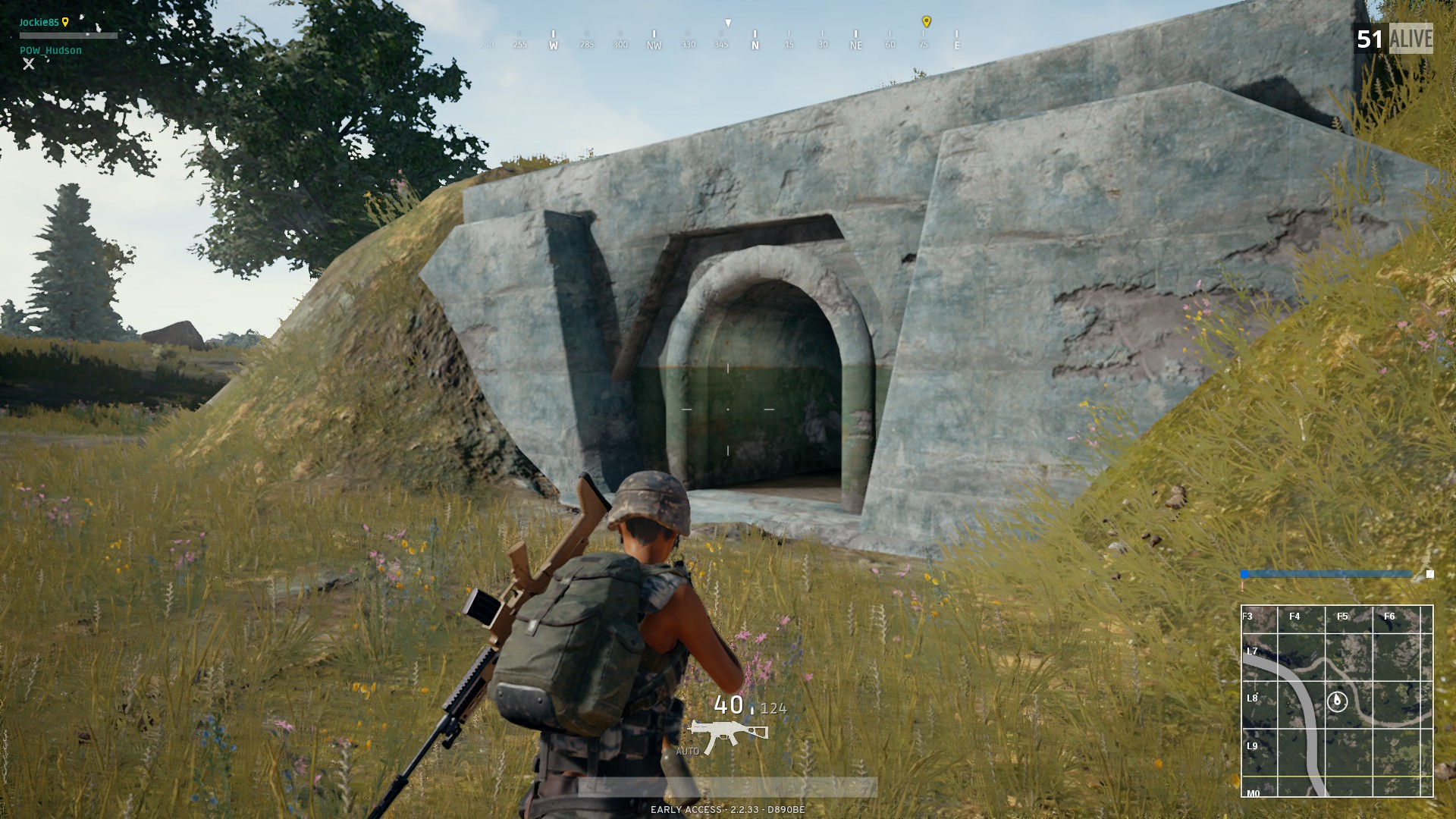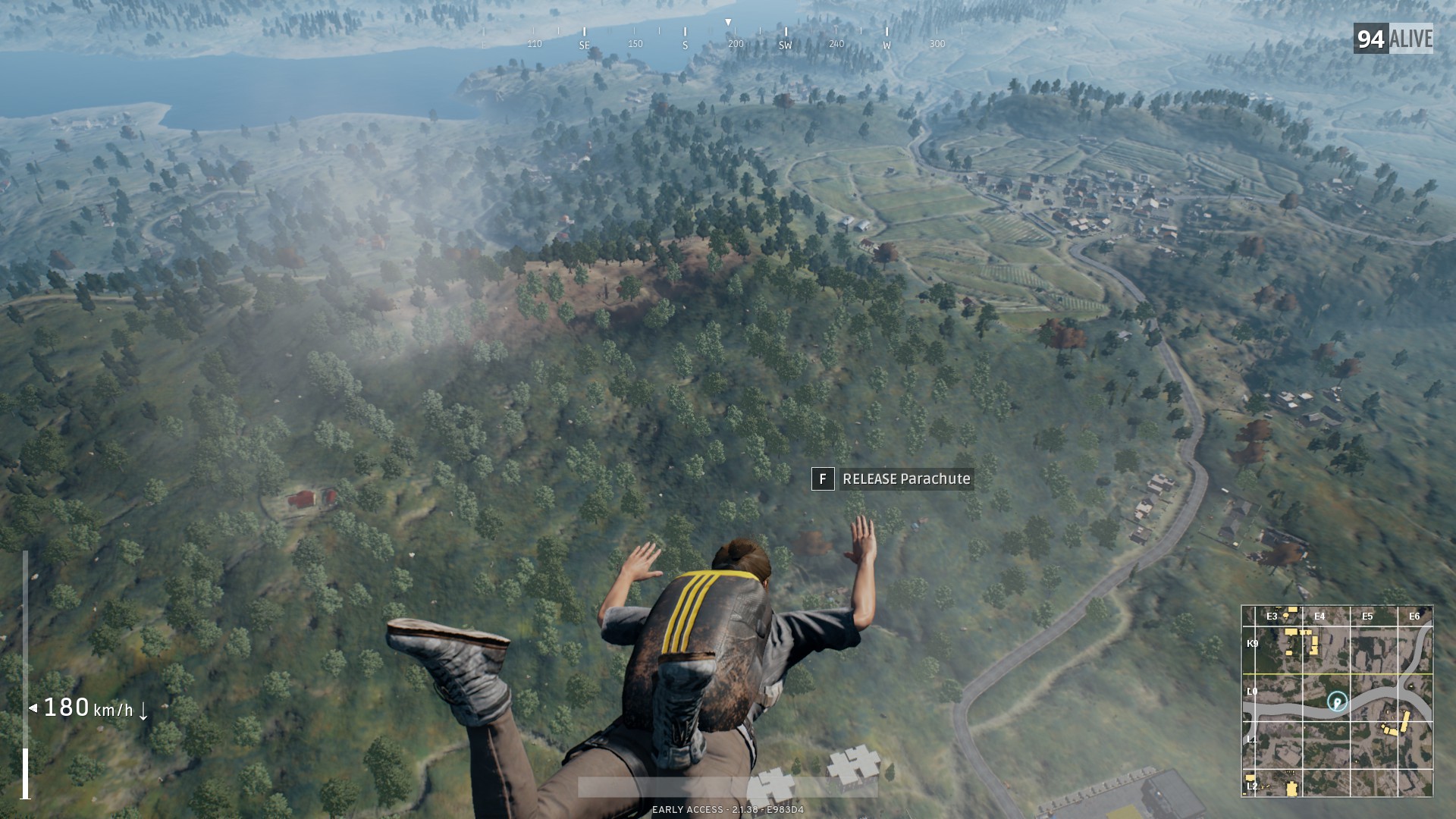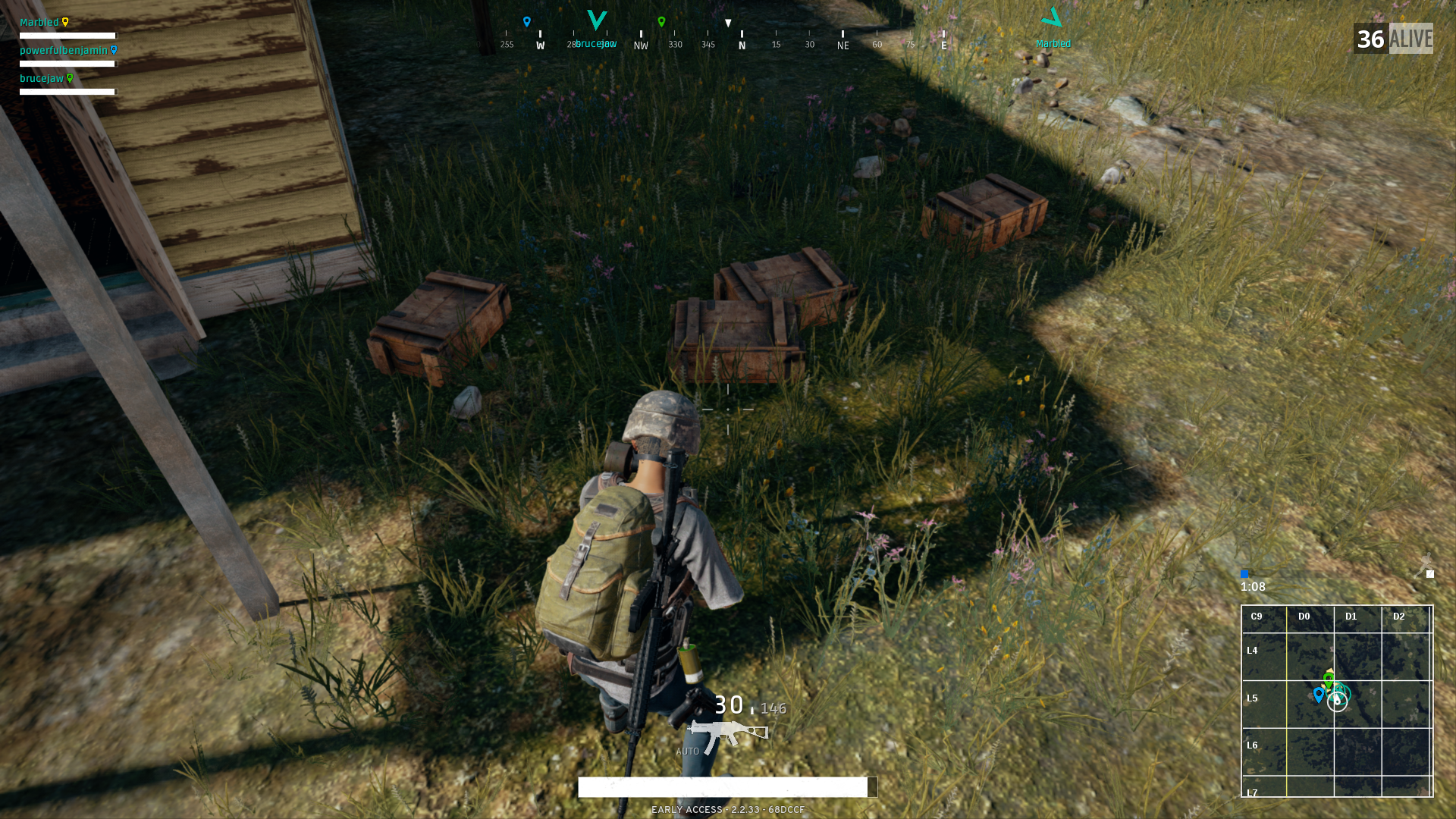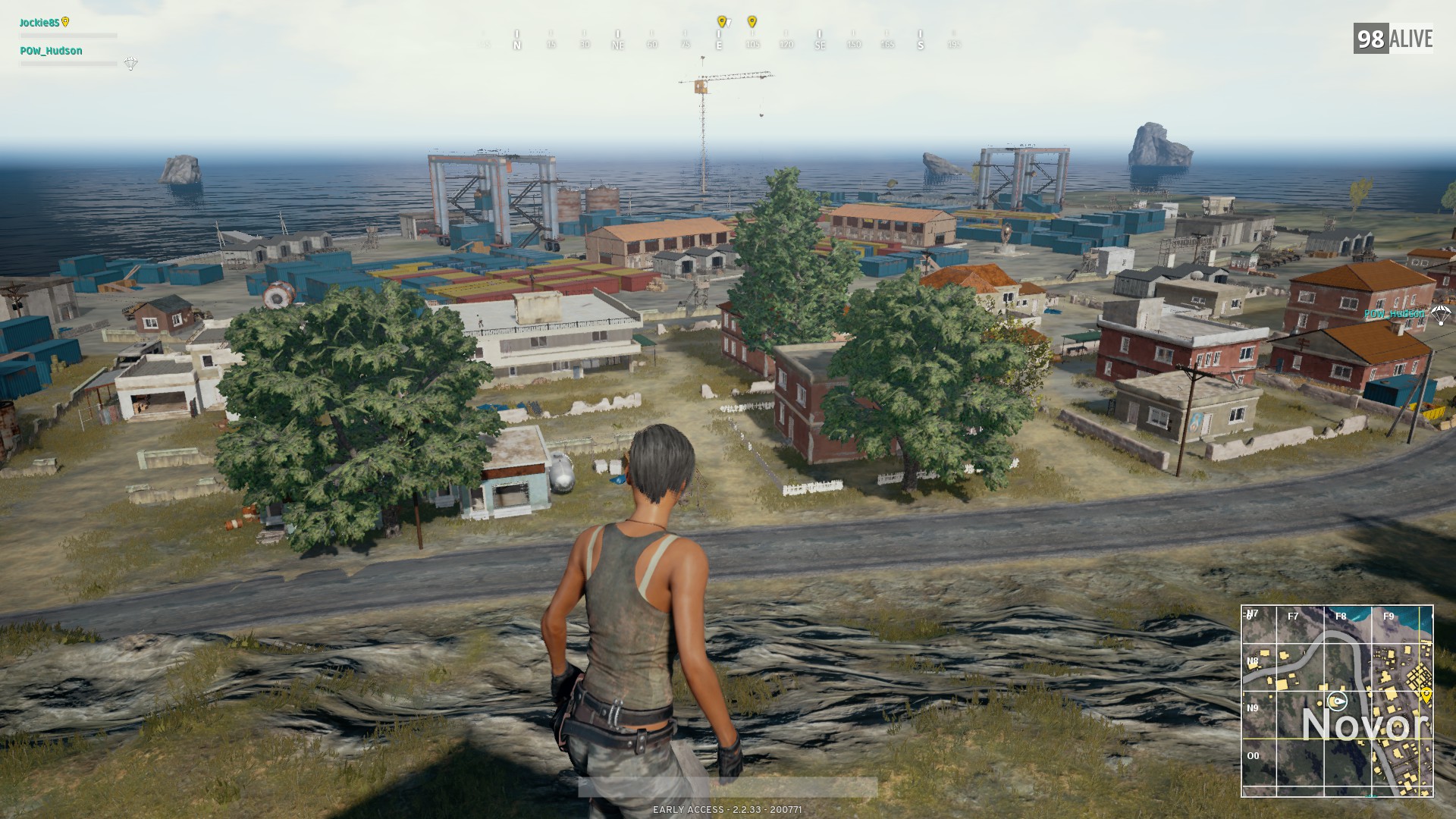Battlegrounds' map gets more haunting as you play it
As you play PlayerUnknown's Battlegrounds more and more, its landscape populates with memories, fears, and ghosts.

Twitch would have you think that PlayerUnknown's Battlegrounds is a game of 500-meter headshots, guardian-angel frying pans, and running people over with ugly Soviet cars. It's true that these 'loud' moments are a big part of Battlegrounds' appeal, as its 100-person scale and Battle Royale format produces ambushes, calamity, and climaxes of adrenaline.
But amid all that gunfighting, Battlegrounds does something subtler, but no less powerful: As you play, its spaces form a uniquely meaningful network of associations and memories for each of its players. It's a competitive, violent FPS full of exploding cars and laugh-out-loud funny highlights, but it's also a game of people, and the ghosts they leave behind.
It’s a source of surprising depth, and plays a huge part in giving Battlegrounds’ action the emotional weight and substance that gets its players invested and keeps them coming back.
Every match starts the same way: An airplane stuffed with players sets off on a random course over the island of Erangel. Players dive out of the plane, descend through the air, and pop parachutes to glide to the ground below.

It’s a clever way to start a game. Immediately, Erangel is established as a traversable space. During the plane ride and the descent, players can see the entire island stretching out beneath. The smooth transition of skydiving downward further emphasizes the spatiality of this island: There’s no loading screen, just the rush of wind and the earth rising up to meet you.
If players were to, say, spawn in at ground level, their understanding of the territory as a continuous space would be restricted to the abstraction of the map and distantly-seen landmarks. Take Skyrim: It's massive, and you can spot landmarks from a great distance, but only being able to trudge through it or fast travel means that the player's relationship to the map is mediated primarily through the overworld map, and therefore lessened. You never feel the map in Skyrim because you're either walking through it at a constant rate, seeing it from eye-level, or teleporting across it.
Contrast this to the first time you took a gryphon ride in WoW, or flew in an airplane, or the excitement around the first photos of the Earth from space in 1966—having territory radically contextualized concretizes that territory as a single cohesive landscape. In Battlegrounds, all of this makes the map feel much more actual and static, and it lends a constancy to landmarks that's necessary for memories to become solid and rooted, and makes players feel the distances they travel from town to town or hill to hill.
The biggest gaming news, reviews and hardware deals
Keep up to date with the most important stories and the best deals, as picked by the PC Gamer team.
The advantage conferred by noticing a single open door can be momentous.
This entrance is also a simple reminder of the other players populating this world. About a hundred people participate in each of Battlegrounds' matches—an enormous number by the standards of most multiplayer games. But down on Erangel, they're all trying to hide from or kill one another, spread out over the island. You rarely encounter more than a dozen other players during a game, and if it weren't for the "Players Alive" counter fixed to the screen it’d be easy to forget that you share the island with 99 others.
But in the airplane, you’re shoulder-to-shoulder with everyone else. You can look them in the eye, or watch the seats empty as other players take their dives. Even after you’ve jumped, you fall alongside your enemies. You're pulled tightly together in the plane, then sprinkled out like salt across the island, then reunited as the circle tightens, forcing everyone back into a small radius. It’s a tableau that encourages players to reflect on the others that they’re sharing this world with.
Unlike DayZ or another survival game, Battlegrounds introduces you to everyone you're about to fight. Faced with the sight of the other people falling alongside you, it’s natural to wonder about which of those people you’ll fight and kill over the next half-hour—and which of them might kill you.
Part soldier, part sleuth
Lethality is essential to how Battlegrounds invests its spaces with meaning. Danger, whether real or suspected, is tangible, and feelings of security are rare and flimsy. To survive, players are taught to reverse engineer stories from cues in their environment. At the beginning of each match, Erangel is in a pristine state, staged for combat by some unseen god. Every door is closed, all vehicles point eastward, and all items and equipment are sequestered to loot spawns defined by the game.
This means that an abandoned frying pan or northward-facing motorcycle is a definite sign of another player’s passage. In a game where being caught off-guard means being killed before you have time to react, the advantage conferred by noticing a single open door can be momentous. It might signal that an entire section of the map is unsafe, and immediately provokes thoughts as to who used that door, how long ago they left, and where they might be now.
Death creates useful information too. When someone is killed, they leave a squat wooden box behind. This holds the dead player’s items, and it remains where they died for the remainder of the match.

These boxes serve as treasure chests, gravestones, and fonts of information for enterprising players. If you’re careful and perceptive, you can parse a story out from this scene by examining which boxes are looted, what items they had, or which ragdolls have already despawned. Crack the code, and you might get the drop on whoever survived this fight. But you’re exposed, the circle’s closing in, and you can hear the sound of a car engine approaching—do you have the time to crack this code?
Every match, each of those hundred players might experience a number of these brief, geographically-specific micro-narratives. But for each player, they feel sparse and momentous—episodes in a single linear, continuous story that begins with a plane ride and ends with death or victory.
Unlike DayZ or another survival game, Battlegrounds introduces you to everyone you're about to fight.
This means that memories have a chance to breathe, to become anchored in a place without being overwritten. A Counter-Strike player that gets caught in an intense firefight at Bombsite A will likely be back there the next round, and the round after that. She could have another version of that same fight five more times before she logs off for the night. Her experiences run together, and become hard to tell apart. Even in other games with large maps, like entries in the Battlefield series, short respawn timers and fast vehicles mean that you’re likely to see a lot of the map in a given round. If you die, you’re a few seconds away from jumping back in at a spawn point or on your squad, and hurtling yourself back into the meat grinder. If you want to be elsewhere on the map, all you have to do is die.

In Battlegrounds, on the other hand, there’s no way to supernaturally jump through space. Wherever you are on the map, there’s an organic story as to how you got there: You’re in Yasnaya because you dropped outside of Mylta Power, stole a motorbike, drove it north until you crashed it, and crouched-ran through a wheat field while laying cover with smokes. And when you die, that’s the culmination of that story. You were gunned down in a place that 20 minutes of decisions led you to: one tiny corner of this enormous map, a place you might have passed by a few times but never really thought much about. But now you’re going to think about it, as the camera pans away from your body, as you load back into the lobby, and as you wait for the next game to start. And the next time you pass by that space, you’ll remember what happened there, and you’ll feel a little of what you felt then.
The more time a player spends with Battlegrounds, the more this meaning occupies the space—the sense of Erangel as a concrete world, the way that even minor interactions are weighted with tension and history, and the gradual accumulation of memories linked to landmarks. What was originally a blank slate becomes a web of memories, affects, and fears, uniquely tailored to each person.
A huge amount of Battlegrounds' depth comes from this. Its gunplay is fun; executing novel strategies is exhilarating; battling alongside friends is a wonderful way to spend some time with people you care about. But what keeps me coming back, more than anything, is how much meaning Battlegrounds’ spaces give its gameplay. They make every action important, make every choice into a story. They make Erangel feel like an actual place—and if you spend enough time in a place, it starts to feel like home.

